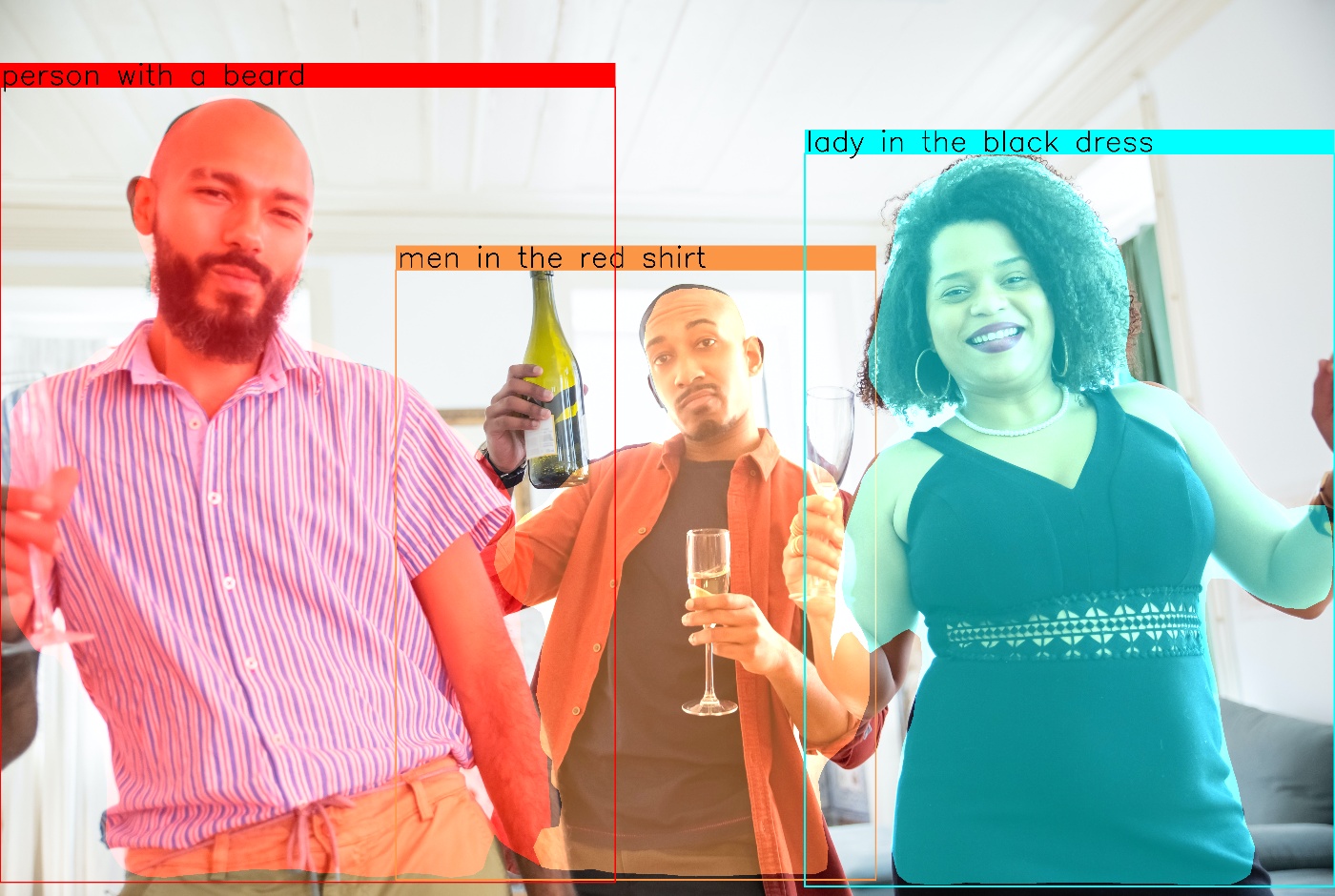Pytorch based library to rank predicted bounding boxes using text/image user's prompts.
Usually, object detection models trains to detect common classes of objects such as "car", "person", "cup", "bottle". But sometimes we need to detect more complex classes such as "lady in the red dress", "bottle of whiskey", or "where is my red cup" instead of "person", "bottle", "cup" respectively. One way to solve this problem is to train more complex detectors that can detect more complex classes, but we propose to use text-driven object detection that allows detecting any complex classes that can be described by natural language. This library is written to rank predicted bounding boxes using text/image descriptions of complex classes.
pip install pytorch_clip_bboxpip install --upgrade git+https://github.com/bes-dev/pytorch_clip_bbox.git- The library supports multiple prompts (images or texts) as targets for filtering.
- The library automatically detects the language of the input text, and multilingual translate it via google translate.
- The library supports the original CLIP model by OpenAI and ruCLIP model by SberAI.
- Simple integration with different object detection models.
We provide examples to integrate our library with different popular object detectors like: YOLOv5, MaskRCNN. Please, follow to examples to find more examples.
$ pip install -r wheel cython opencv-python numpy torch torchvision pytorch_clip_bboximport argparse
import random
import cv2
import numpy as np
import torch
import torchvision.transforms as T
import torchvision
from pytorch_clip_bbox import ClipBBOX
def get_coloured_mask(mask):
colours = [[0, 255, 0],[0, 0, 255],[255, 0, 0],[0, 255, 255],[255, 255, 0],[255, 0, 255],[80, 70, 180],[250, 80, 190],[245, 145, 50],[70, 150, 250],[50, 190, 190]]
r = np.zeros_like(mask).astype(np.uint8)
g = np.zeros_like(mask).astype(np.uint8)
b = np.zeros_like(mask).astype(np.uint8)
c = colours[random.randrange(0,10)]
r[mask == 1], g[mask == 1], b[mask == 1] = c
coloured_mask = np.stack([r, g, b], axis=2)
return coloured_mask, c
def main(args):
# build detector
detector = torchvision.models.detection.maskrcnn_resnet50_fpn(pretrained=True).eval().to(args.device)
clip_bbox = ClipBBOX(clip_type=args.clip_type).to(args.device)
# add prompts
if args.text_prompt is not None:
for prompt in args.text_prompt.split(","):
clip_bbox.add_prompt(text=prompt)
if args.image_prompt is not None:
image = cv2.cvtColor(cv2.imread(args.image_prompt), cv2.COLOR_BGR2RGB)
image = torch.from_numpy(image).permute(2, 0, 1).unsqueeze(0)
image = img / 255.0
clip_bbox.add_prompt(image=image)
image = cv2.imread(args.image)
pred = detector([
T.ToTensor()(cv2.cvtColor(image, cv2.COLOR_BGR2RGB)).to(args.device)
])
pred_score = list(pred[0]['scores'].detach().cpu().numpy())
pred_threshold = [pred_score.index(x) for x in pred_score if x > args.confidence][-1]
boxes = [[int(b) for b in box] for box in list(pred[0]['boxes'].detach().cpu().numpy())][:pred_threshold + 1]
masks = (pred[0]['masks'] > 0.5).squeeze().detach().cpu().numpy()[:pred_threshold + 1]
ranking = clip_bbox(image, boxes, top_k=args.top_k)
for key in ranking.keys():
if key == "loss":
continue
for box in ranking[key]["ranking"]:
mask, color = get_coloured_mask(masks[box["idx"]])
image = cv2.addWeighted(image, 1, mask, 0.5, 0)
x1, y1, x2, y2 = box["rect"]
cv2.rectangle(image, (x1, y1), (x2, y2), color, 6)
cv2.rectangle(image, (x1, y1), (x2, y1-100), color, -1)
cv2.putText(image, ranking[key]["src"], (x1 + 5, y1 - 10), cv2.FONT_HERSHEY_SIMPLEX, 4, (0, 0, 0), thickness=5)
if args.output_image is None:
cv2.imshow("image", image)
cv2.waitKey()
else:
cv2.imwrite(args.output_image, image)
if __name__ == "__main__":
parser = argparse.ArgumentParser()
parser.add_argument("-i", "--image", type=str, help="Input image.")
parser.add_argument("--device", type=str, default="cuda:0", help="inference device.")
parser.add_argument("--confidence", type=float, default=0.7, help="confidence threshold [MaskRCNN].")
parser.add_argument("--text-prompt", type=str, default=None, help="Text prompt.")
parser.add_argument("--image-prompt", type=str, default=None, help="Image prompt.")
parser.add_argument("--clip-type", type=str, default="clip_vit_b32", help="Type of CLIP model [ruclip, clip_vit_b32, clip_vit_b16].")
parser.add_argument("--top-k", type=int, default=1, help="top_k predictions will be returned.")
parser.add_argument("--output-image", type=str, default=None, help="Output image name.")
args = parser.parse_args()
main(args)